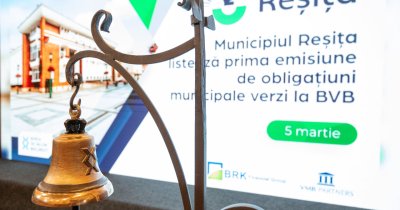The 2021 report shows that most banks assessed have demonstrated an interest in sustainability and have already advanced significantly in their sustainability journey by implementing relevant frameworks. However, full implementation of relevant practices to achieve the transition to a socially responsible and net zero economy remains an important challenge.
Phuong Gomard, Partner, Mazars says: “Banks are increasingly committing to making their practices more sustainable, and this has led to progress since our previous studies. The findings are encouraging, but they also reveal the work that remains to be done, especially in regions where ESG-related regulations and guidance are yet to be developed. We will continue our work on identifying best practices relating to governance, strategy, risk management, and disclosure. By providing financial institutions with exemplary practices and recommendations, we hope to help them progress to a more sustainable and socially responsible business model and contribute to the transition to a net zero economy.”
Global findings: banks significantly advance in their sustainability journey
The global analysis shows that most banks:
- Have allocated formal responsibility for sustainability-related matters within their board and management functions, with specific oversight processes. On average, 66% of banks now include sustainability criteria in variable remuneration, compared to 41% last year. However, only 33% of banks identify clear criteria linked to both internal sustainability initiatives and financing activities.
- Identify environmental targets for their activities, but only 24% have set net zero financed emissions targets in line with the Paris Agreement objectives. The Paris Agreement Capital Transition Assessment (PACTA) methodology is also making progress in Europe, Australia, and South America.
- Use a variety of approaches to assess their exposure to climate change risk. While 70% of banks are building scenario analysis and stress testing capabilities, gaps in data remain a challenge for assessing climate change risk. Only 19% of banks disclose on materiality of climate risk through credit or market risk metrics.
- Implement sustainability reporting standards, mostly focused on climate objectives. More countries consider making TCFD (Task Force on Climate-related Financial Disclosures) reporting mandatory and some 92% of banks have already aligned their sustainability reporting with the TCFD recommendations, compared to 76% last year.
Progress made: 2021 vs 2020
Since the 2020 assessment – published in February 2021 – the criteria in all four areas assessed were tightened. This adjustment not only better reflects the progress made in implementing sustainability practices, but also in showing that progress remains to be made as banks continue on the pathway to sustainability and making a contribution to low carbon economies. Due to the changes in criteria:
- More banks have set a long-term and ambitious strategy for sustainability (76% compared to 71% last year). Better scores were also obtained by banks in relation to risk management: 62% of banks integrate ESG and climate risks into risk management framework compared to 59% last year.
- Governance- and reporting-related scores decreased. Some 60% of banks have implemented measures to foster a governance for sustainability, compared to 74% last year. 77% of banks align disclosure with ESG reporting standards (vs 82% in the previous year).
French and UK banks lead on ESG risk management
French and UK banks still hold the leading position in all fields assessed, with the implementation of sustainability strategies being their strongest point. Banks from both countries achieved the highest scores across all geographies in ESG risk management. There is still room for improvement for European banks’ (excluding FR/UK) governance and disclosure arrangements. They are expected to bridge the gap with French and UK banks thanks to the enforced ‘EBA Report on Management and Supervision of ESG risks’.
Romanian banks make notable progress on sustainability
In Romania, like in most European countries, financial institutions are actively seeking new ways to reduce their climate-risk exposure, encourage net-zero carbon emissions, and develop new sustainable products. In the last few years, many banks have realised that becoming a sustainable provider is the next move, especially since more and more consumers, and here we refer to Millennials in particular, are choosing nowadays brands that have a sustainability agenda or sustainability credentials.
„The financial world can no longer see its future as separate from the environment and climate change developments. Despite the progress made in the last years by local banks, the full implementation of relevant practices to achieve the transition to a socially responsible and net zero economy remains an important challenge and more efforts are necessary going further.”, mentioned Răzvan Butucaru, Partner, Financial Services & Advisory Leader, Mazars Romania.
At the local level, we analysed the top ten Romanian banks by assets, using the public information available at Q1 2022, that can be found on every bank’s website, sustainability report, transparency report, or other sustainability policies. Our findings show that:
- Only two banks out of ten have created a local sustainability report, where they conducted a formal materiality assessment to show that they prioritise the issues that have the biggest impact on their business, communities, and of course, on the environment. Although the other eight banks have not yet created this kind of report, they have started to showcase their initiatives regarding sustainability in their annual reports.
- More than half of the banks analysed have allocated formal responsibility for sustainability-related matters within their management functions. While most of the banks don’t have a sustainability manager in charge, their chief risk officers (CROs) are handling all the sustainability related opportunities and challenges.
- Five in ten banks have included in their business offering green credits for the population. Through this initiative, the local banks are helping to protect the environment by lowering the carbon footprint, and are supporting their clients with higher living standards. When we are talking about net zero emissions, the Romanian banks are planning to reach this objective in the future.
„Based on their current mandates, central banks do not have explicit climate targets, and there are divergences on the topic expressed by well-known economists, but the incorporation of specific policies could still be justified in terms of their influence on price stability and financial stability. The National Bank of Romania (NBR) actively contributes to improving the transparency, and the availability of information on climate change, as well as raising awareness of the impact of climate change on society and the financial system. Recently, the NBR's ongoing efforts have been focused mainly on communicating recommendations to supervised entities on the prudent approach to climate risk, supplementing the Credit Risk Center with information on green loans, and building a risk monitoring board on the banking sector from climate change, to be updated and disseminated regularly. At the same time, we are conducting analyses on making the prudential requirements for green financing more flexible, to stimulate this type of lending, without affecting financial stability.”, mentioned Cristian Popa, Member of the Board, The National Bank of Romania.
- In Romania, none of the banks are following the Task Force on Climate-related Financial Disclosures (TCFD) recommendations. Banks should evaluate their financed emissions and expand their sustainability reporting in line with the TCFD recommendations.
- As we all know, banks play an important role in climate protection because they are the intermediaries between investors and capital seekers. With their help, more capital can flow into sustainable and green investments, and this is where green bonds are playing a crucial part. In Romania, in the last two years, three banks have issued green bonds, with the scope of encouraging sustainable activities. Two out of the three green bonds have been listed on the Bucharest Stock Exchange.
„The risks associated with a changing climate extend across many, if not all, sectors of the economy. Each sector will face its own challenges in understanding, assessing and managing the most material climate-related risks. For banks as well as other financial institutions, the ability to build a comprehensive understanding of their climate risk exposure will require knowledge of their own businesses exposure to climate-related risks and those of their customers and counterparties across a wide range of sectors.”, mentioned Ovidiu Otto Strasszer, Senior Manager, Financial Advisory, Mazars Romania.
 Octavian Palade
Octavian Palade












Any thoughts?